Impacts
Fire & Ice's impacts come in the form of material contributions to Alaska's research capacity, impacts of F&I's various components, and scientific discoveries. All numbers are current as of February 2022.
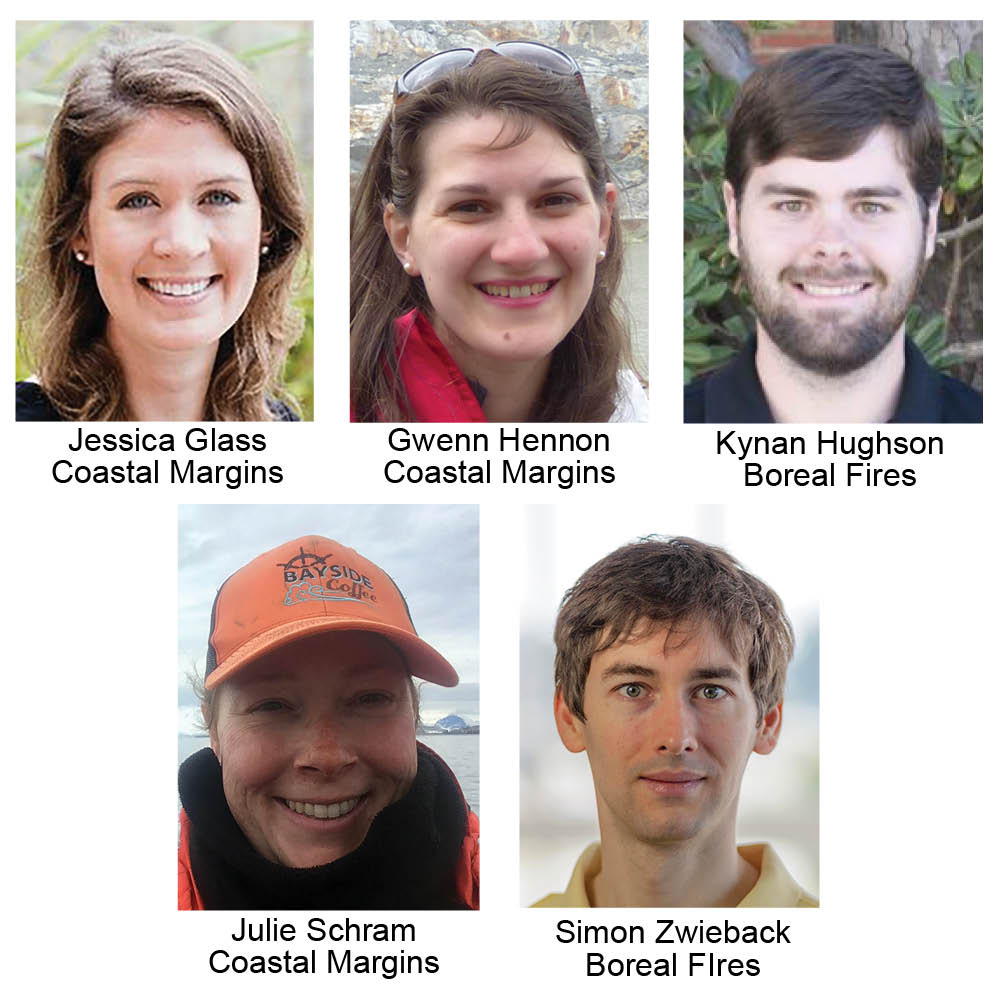
Contributions to Research Capacity
- 5 University of Alaska tenure-track faculty hires
- 4 University of Alaska postdoctoral researcher hires
- 50+ UA faculty members, 40+ UA staff, and 10 postdocs involved in the project
- 50+ graduate students and 58+ undergraduate students involved the project
- 36 students graduated
- 30+ academic publications
- Submitted 87 grant submissions for $56.2 million, including NSF Coastlines and Peoples (CoPe) and other large-scale proposals
- 27 grants awarded for $13.7 million; major awards include 2 NSF Navigating the New Arctic awards, Department of Energy Education Innovation and Research award
- Partner in NSF Research Traineeship "Tamamta" award
- 16 faculty and 17 student research seed awards
- 4 Sitka Sound Science Center fellowships
- Increased support at the University of Alaska for interdisciplinary science and education
- Impacts to University of Alaska perspectives, values, and organization
- Increased collaborations across University of Alaska campuses
Impacts of Boreal Fires Component
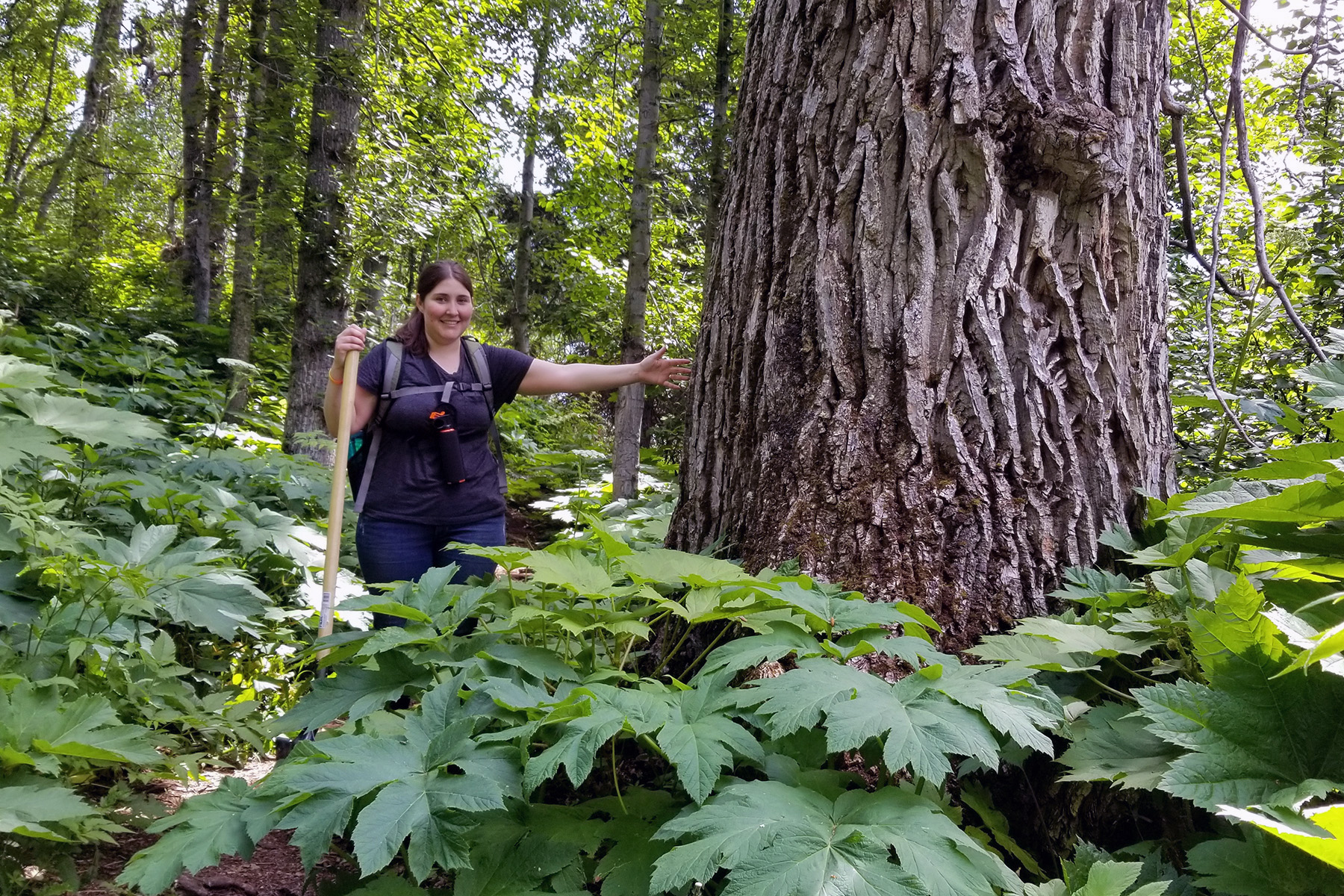
Fire & Ice Boreal Fires undergraduate student Jennica Kilcher conducts a vegetation survey near the perimeter of the McHugh Creek Fire south of Anchorage, June 19, 2019.
Boreal Fires research will improve people’s ability to
- Quantify short-term fire ignition risk
- Map boreal fuels
- Use algorithms to scale up local fuel characterizations
- Produce seasonal climate forecasts
- Predict zones of more likely fires
- Monitor fire temperatures and intensities
- Characterize low-intensity fires
- Forecast fire behavior
- Track the impacts of fire on ecosystem services and plan for contingencies
- Take steps to reduce costs of fire prevention and suppression
Boreal Fires research impacts across the sciences include:
- Climatological data linking large scale phenomena to fire weather
- Advancements in remote sensing and Hyspex techniques
- Impacts on fish, wildlife ecology and forestry policy and management
- Sociological insights into co-production of knowledge with Indigenous communities
- Economic data on fire prevention and suppression
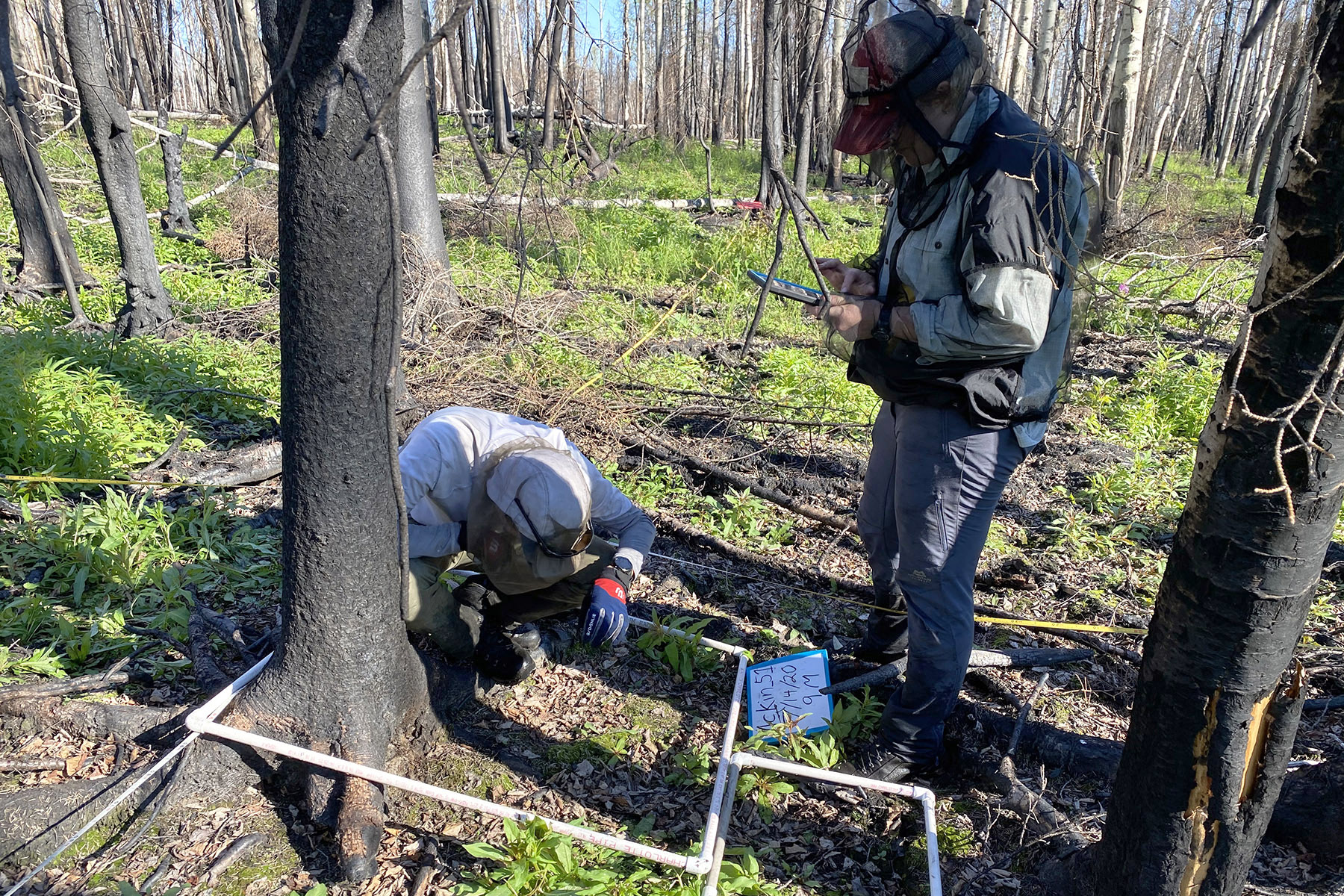
Fire & Ice Boreal Fires students Puck VanDommelen and Amy Wockenfuss conduct a vegetation survey in the McKinley Fire burn outside Willow, July 14, 2020.
Multiple Boreal Fires deliverables will enhance Alaskan wildfire prevention and response, including:
- Improved fire weather outlooks for use by fire managers
- Hyperspectral analysis of fire fuels scaled up to state level
- Techniques for rapid assessment of fire impacts on ecosystem services
- Fire risk maps and tables, and property damage risk maps
Many Boreal Fires findings can be applied across the circumpolar regions and the boreal forest, including:
- Climate, lightning and fire fuels findings
- Fire spread, intensity and severity data
- Hyperspectral and UAV techniques
- Co-production of knowledge applicable to fire-impacted rural communities and subsistence systems
Impacts of Coastal Margins Component
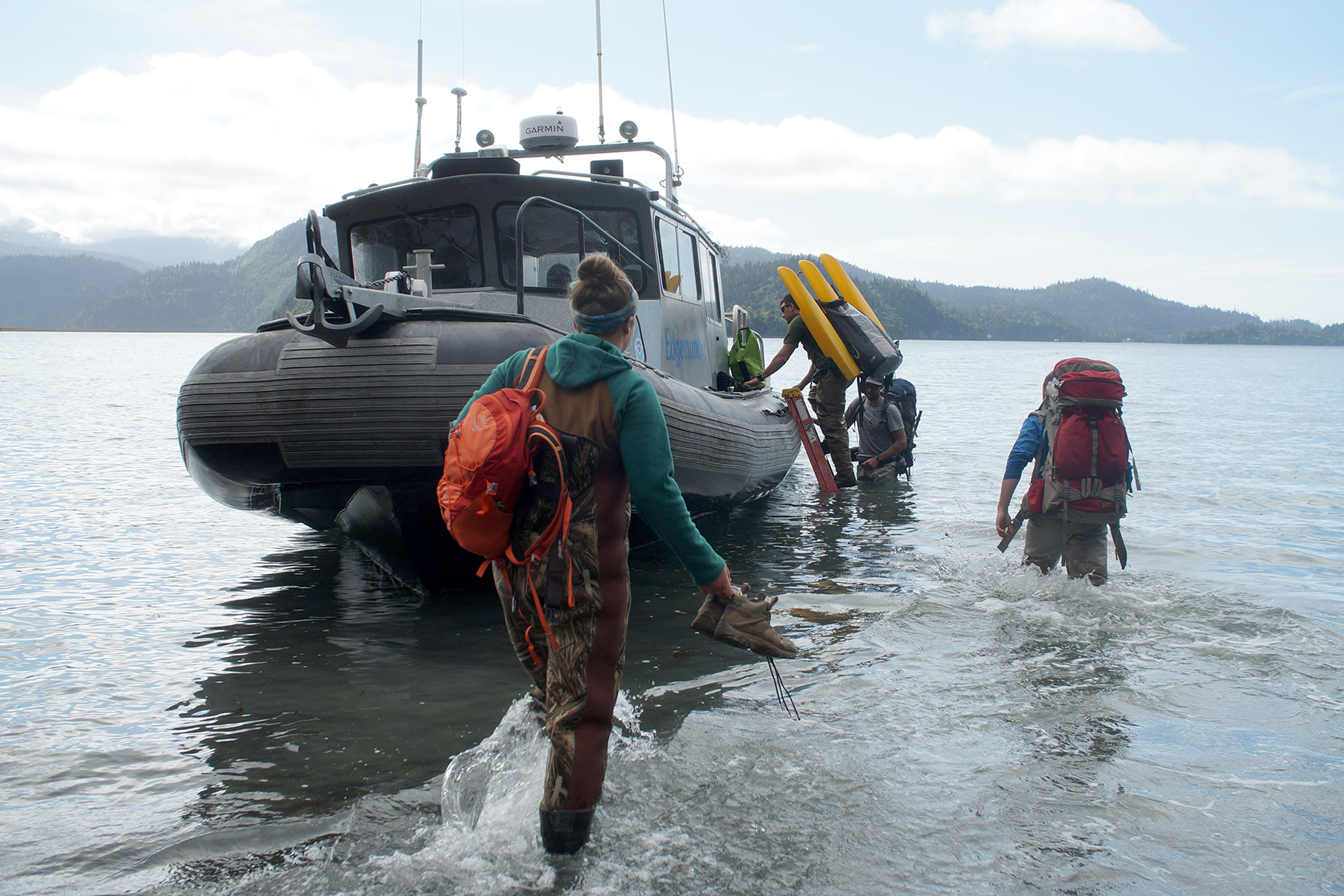
Members of the Fire & Ice Coastal Margins “Stream Team” board a boat to return from Grewingk Glacier to Kasitsna Bay Lab in Kachemak Bay, August 6, 2019.
Coastal Margins research will improve people’s ability to:
- Understand how freshwater runoff influences coastal oceanographic processes
- Predict future conditions in glacially influenced estuaries
- Track the relative importance of key environmental drivers on nearshore ecosystems
- Understand how organisms will respond to changing ocean conditions
- Understand how nutrition sources change along the glacial to non-glacial gradient
- Elucidate marine terrestrial linkages in a changing environment
- Reveal and mitigate potential community vulnerabilities to environmental change
Coastal Margins impacts across the sciences include:
- Multiple years of stream biogeochemistry data to aid in establishing modern baselines across glacier gradients
- Predicted impacts of climate change to keystone species, biological community structure, and primary and secondary production
- Linking biophysical processes across terrestrial, glacial, freshwater, and marine systems
- Novel data on coastal and estuarine hydrodynamics and chemical oceanography
- Extensive environmental and biological datasets enabling continued and expanded research into key ecosystems
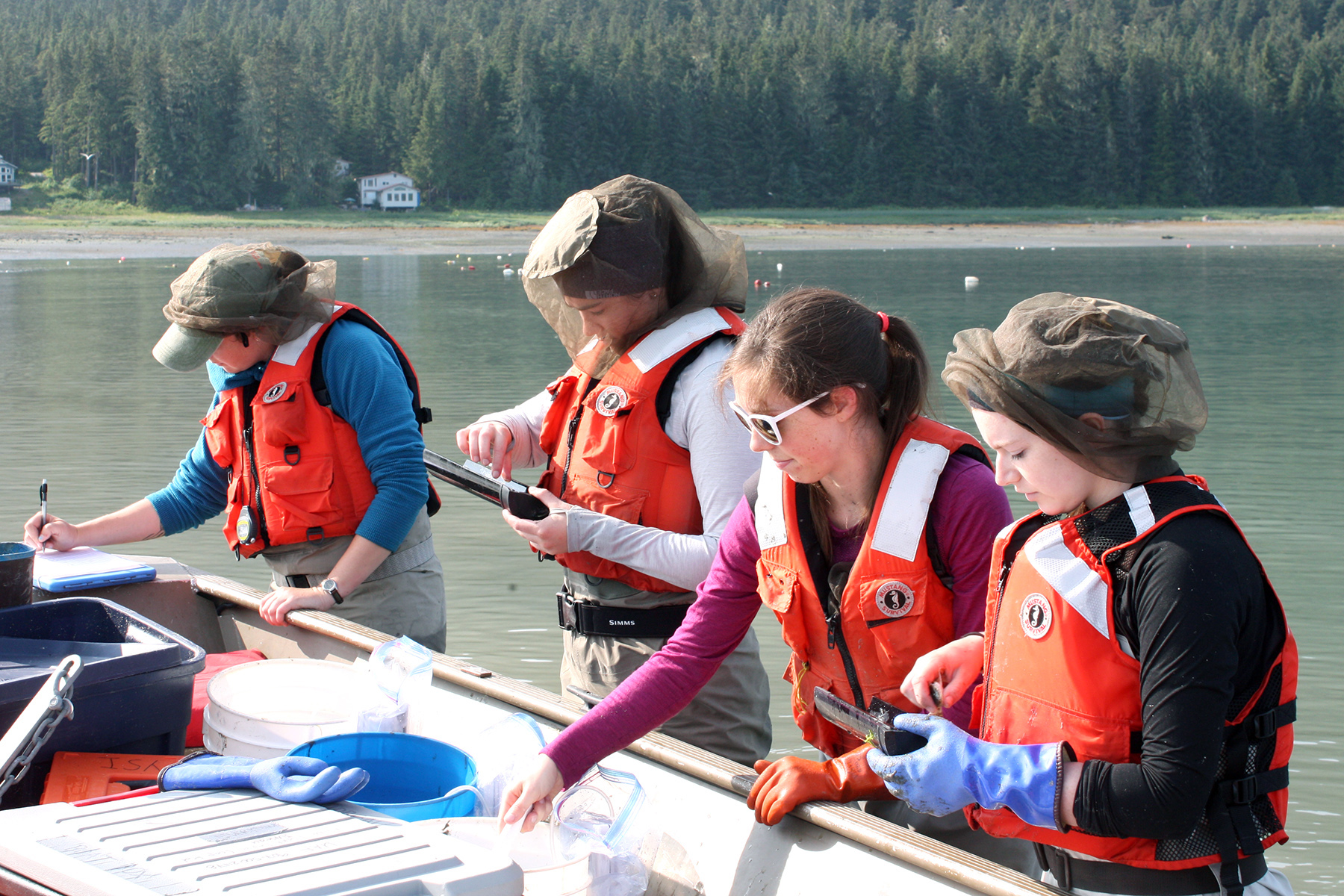
(Left to right) Fire & Ice Coastal Margins researchers Nina Lundstrom, Madison Bargas, Krista Oke and Sydney King sort and measure fish in the Mendenhall River estuary near Juneau, July 3, 2019.
Impacts to Alaska include:
- Insights into climate change impacts to coastal Gulf of Alaska ecosystems, food webs, and fisheries
- Information on physiological thresholds of commercially important marine species
- Enhanced laboratory facilities and field equipment in two key regions
Many Coastal Margins results can be applied across the circumpolar regions and beyond, including:
- New insights into the drivers of extreme ocean acidification events
- Improved understanding of how changes to nearshore variables impact distribution and productivity of commercial species
- Improved knowledge of how local drivers impact large-scale coastal processes
- Information about terrestrial marine linkages relevant to coastal glacierized landscapes worldwide
- Human dimensions findings broadly applicable to resource based communities around the world
Impacts of DEW, Economic Development, and Communications components
Girls in the Forest instructor Anna Talucci demonstrates tree coring in the Chena River State Recreation Area, August 2021.
- 34 teachers trained in afterschool curriculum, reaching at least 238 K-12 students
- 125 students supported through UAF and UAA tutoring
- 64 high-school aged girls participated in "Girls on Water" and "Girls in the Forest" programs
- 8 education and outreach awards and 6 data visualization awards
- 100 travel awards
- 61 faculty and postdocs involved in mentoring activities
- 235 people attended workshops
- Key research findings about first-generation STEM students that contrast with dominant narratives
- 13 "Phase 0" awards given out to Alaskan startup businesses
- 25+ community economic development events, including technology events, Startup Weeks, workshops on philanthropic giving, presentations on applying for federal grant monies
- Shared information with the public via newsletters, 900+ Facebook followers and 1,000+ Twitter followers, and multiple YouTubevideos

